Rules for planting and caring for a chubushnik
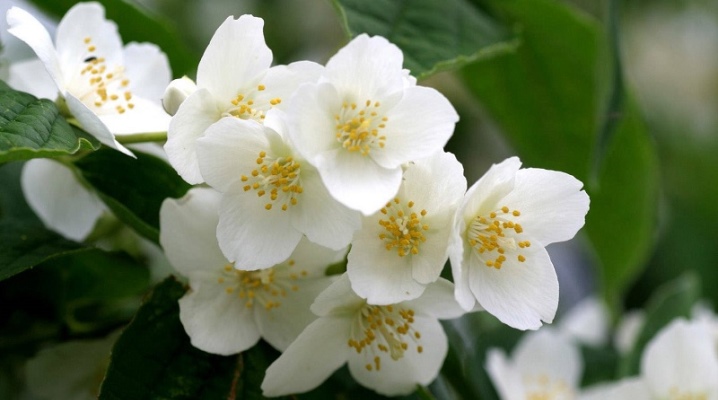
Chubushnik is considered one of the most unpretentious plants; it easily takes root in any region of our country. People call it garden jasmine, but experts say that this is an incorrect name, because the chubushnik belongs to the Hortensiev family. And the timing of planting and the conditions for caring for him have nothing to do with the representative of the Olive family. The only thing that really unites them is beautiful flowers with a delicate aroma. It is worth getting to know the named brother of fragrant jasmine better and learn about its characteristic features.
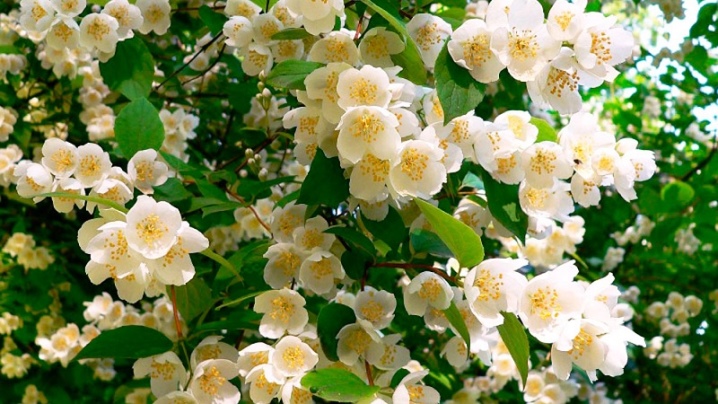
Landing dates
Experienced gardeners advise planting garden jasmine in early September. However, the actual dates of planting differ depending on the region in which the shrub will grow. For example, in Siberia, the mock-orange is planted from September 3-15. Similar growing conditions are used in the Urals. Gardeners of the central and southern regions of our country plant a mock orange from mid-September to the end of October.
In particular, garden jasmine is planted in the Moscow region from September 20 to October 15. In summer and spring, it is better not to plant this shrub - the gardener will not have time to carry out the work necessary for planting, and the plant may die. If you want to start planting the garden with the onset of the first spring days, it is worth planting a mock-orange before the buds begin to bloom.
In autumn, the plant is dormant, but this does not prevent it from adapting to harsh climatic conditions. And the gardener does not have to worry that he will not have time to take care of the plant.

Site selection and soil preparation
Chubushnik loves sunny areas with fertile, but not waterlogged soil. Light loam or black earth is ideal for him. If you plant it in the shade, the plant will stretch out in search of sunlight. If you plant it in swampy soil, it can die from an excess of moisture.
The selected area should not be open - any secluded corner near the fence, the wall of the house or the sunny side of the gazebo is suitable for a chubushnik. It can be planted near tall trees to protect it from the piercing wind. However, it should be borne in mind that this plant loves space, so it cannot be planted directly under trees or thicken the planting.
After choosing a place, you should prepare the soil. A week before planting, you need to dig a hole up to half a meter deep and with a similar diameter. Even in the presence of good soil, the soil should be filled with a special fertile mixture, which is made from turf and humus. If clayey chernozem prevails on the site, sand should be added to this mixture. Mineral dressing is also added there (100 g of wood ash and 30 g of superphosphate). If you plan to plant a plant on waterlogged soil, drainage should be poured onto the bottom of the pit (a layer of crushed stone, expanded clay or broken brick 15 cm thick).
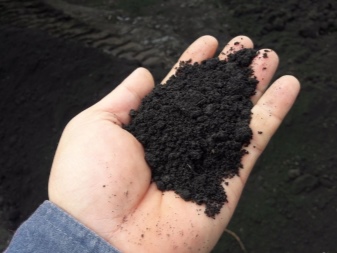

Features of planting works
The plant should be planted with an earthen clod. In the process of planting, it is necessary to ensure that the root collar is at the same level with the ground. Chubushnik has a closed root system, so its root collar can and should be buried, but no more than 2-3 centimeters. If you bury the root collar to a great depth, this will lead to decay of the root system of the plant.
Immediately after planting in open ground, the mock-orange is watered abundantly. Up to 20-30 liters of water is poured onto one bush. When the moisture is absorbed, sprinkle the hole with dry earth. A couple of days after planting, the trunk circle must be mulched with peat, humus or garden soil. The above-ground part of the shrub should be cut off.
The seedling needs to be left with only a few shoots, each of which will have 2-3 buds. This will slow down the formation of buds somewhat, but will contribute to the rapid growth of the bush.
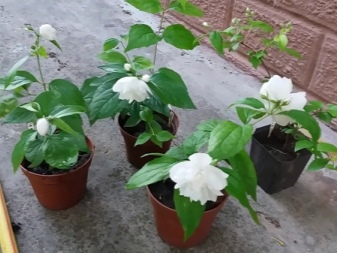
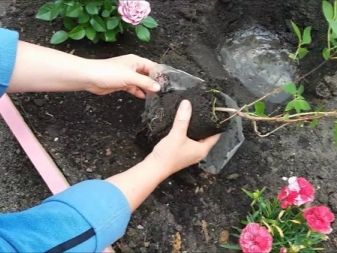
What can you plant next to?
Chubushnik is a self-sufficient culture, so it looks organically both in group and in parterre planting. In addition, it is considered the ideal hedge solution. You can plant lilacs, hydrangeas, spirea or weigela near the lush blooming bushes of garden jasmine. The beauty of flowering and luxurious greenery of these shrubs will turn part of the garden into a cozy fragrant corner of nature.
If you do not want to arrange lush thickets on the site, you should pay attention to decorative hosts. The bare skeletal branches of the shrub can be supplemented with hosta leaves of various colors and shapes. Dense thickets of large-leaved brunner will allow filling the void and creating volume. If you are not sure that you will be able to choose a beautiful combination of plants, you should plant a mock-orange near coniferous trees or against the background of a well-groomed lawn.
To enjoy flowering for several months, it is worth planting several varieties of chubushnik on the site at once. For example, the common mock-orange blooms in late May - early June. Literally a couple of weeks will pass, and the crown mock-orange will bloom. It will delight you with the beauty of flowering until the 10th of July. And the Lemoine variety will bloom in all its glory in the middle of summer.
You can pick up neighbors on the site, depending on the selected type of mock-orange. For example, tree-like varieties, the height of which is 3-4 meters, look beautiful next to medium-sized perennials. These are lilies, herbaceous peonies and plants with a spherical crown. Dwarf chubushniki, the height of which does not exceed one meter, are organically combined with zamanikha, tree peonies or hibiscus. In southern latitudes, the favorite composition is a combination of mock orange and jasmine.
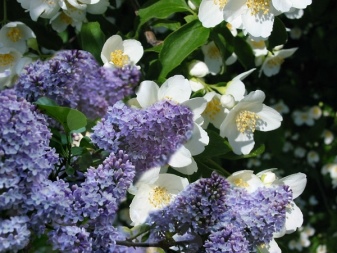
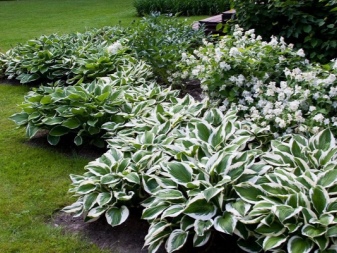
Care rules
Frost-resistant, hardy mock-orange does not require anxious care. It is not difficult to grow it. It will withstand both the skillful handling of an experienced gardener and the inexperienced beginner's actions. However, compliance with the rules for caring for him will allow you to achieve gorgeous flowering and rapid growth. Each of them is worth considering in more detail.
Top dressing
Garden jasmine is fed only once a year in late spring. In the first year after planting, the plant is fed with organic fertilizer - a diluted infusion of slurry. The solution is made from 1 part slurry and 10 parts water. From the second year, the shrub is also fertilized with organic matter and mineral fertilizers.
Mineral dressing consists of 15 g of urea, 15 g of potassium sulfate and 20 g of superphosphate. All components are diluted in a bucket of water. This solution is more than enough for two plants. When the mock-orange fades, it is also fed with mineral potions. Only 15 g of urea is changed to 100 g of wood ash, and the amount of superphosphate is increased to 30 g. This solution is enough for 1 square meter. m.
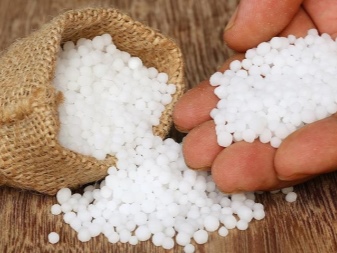

Illumination
Chubushnik loves the sun's rays or bright diffused light. However, young shrubs can suffer from the scorching sun. Burns appear on the leaves, the plant withers, turns yellow and sheds foliage. To prevent unpleasant consequences, the seedlings should be shaded in the first week after planting. And if the summer is especially hot, it is worth taking care of the shading of young plants at the peak of solar activity - from 12 to 16 hours.
Temperature
The shrub is able to withstand frosts down to -35 degrees, so it will take root even in the most severe climatic conditions. It can withstand mildly cold winters and can survive cool or not very hot summers.
But if tropical heat is established in the region, the gardener should organize the optimal watering regime for the crop.

Watering
This shrub does not like waterlogging, but at the same time it reacts negatively to prolonged drought. The leaves wither, sag and lose their decorative appearance. In order not to introduce the plant into a state of stress, 20-30 liters of water should be poured on it once a week. During the flowering period, the chubushnik needs daily watering. Immediately after it, the soil around the plant should be loosened, the weeds should be weeded. To prevent the evaporation of precious moisture, the topsoil should be mulched with straw or hay.
Pruning
Chubushnik will delight you with the beauty of the crown and lush flowering, if the gardener will cut it off every year. In autumn, after flowering, all dry, old and diseased branches are removed, as well as branches that thicken the crown of the shrub. Old shoots are cut every 3 years. Anti-aging pruning is done in early spring. Select several trunks and cut them to a height of 30 cm. The remaining stems are cut completely. Slices are processed with garden pitch, and the trunk circle is mulched.
During the period of active growth and flowering, it is not allowed to cut the shrub.

Transfer
If necessary, the chubushnik can be transplanted from one place to another, or an overgrown bush can be planted. This plant is valuable in that not only young seedlings, but also adult trees take root in a new place. Regardless of the age of the plants, they are transplanted after preliminary preparation. To properly prepare a mock-orange for transplant, perform the following steps:
- pruning is performed: the crown is cut off by a third, and the side shoots are removed completely;
- the pit for transplantation should be carefully prepared by adding the necessary fertilizers to it and flooding it with water;
- the roots of the dug out bush are treated with "Kornevin", and the crown - with a weak solution of potassium permanganate (it should have a pale pink solution);
- the bush is placed in a prepared hole, covered with earth and watered abundantly.
It is better to transplant it in the fall in September-October or in the spring, until the buds open. However, experienced gardeners insist on the fall season, since during this period you can prepare the plant and the necessary fertilizers without any rush. If everything is done correctly, for 3-4 years after the transplant, the mock-orange will bloom profusely.
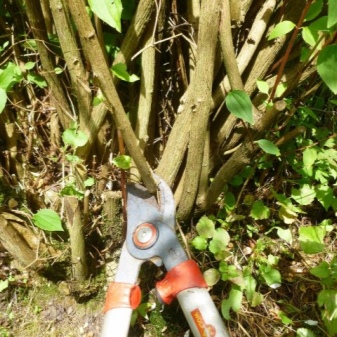

Wintering
The plant is not covered for the winter. Even if severe frosts damage individual shoots, they are pruned in the spring and the shrub grows again. In the cold season, he is not looked after. These simple rules apply to both adult and young plants.
Possible growing problems
Chubushnik is considered one of the most disease-resistant plants. He can pick up a fungal disease only from a careless owner who does not cut off old shoots and does not thin out the crown. Both provide air exchange and protect leaves from stains and rust. If the fungus nevertheless appears, the plant should be immediately sprayed with appropriate preparations.
The situation with pests is much more serious. Leaf weevils, aphids and spider mites harm mature plants and can kill a young seedling. Ways to combat parasites depend on the degree of damage. If the pest colony is small, a solution of laundry soap or potassium permanganate will help. It is worth spraying the plant with tobacco infusion or mustard powder. If the moment is missed and beetles are sitting on each branch, you should purchase a chemical insecticide from the store.
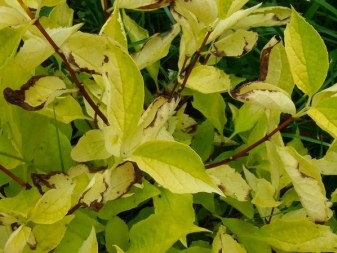
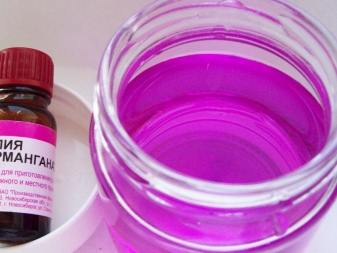
Often, beginners make mistakes when caring for a plant, and then wonder why it does not bloom. He has 5 reasons for this.
- The shrub can "fatten" due to excess nitrogen, and then the gardener must reconsider the composition of the mineral feeding.
- Chubushnik may suffer from a lack of sunlight. In this case, a transplant is necessary.
- If the owner has gone too far with spring pruning, the bush can direct all its efforts to restore the shoots.
- If last year's pruning after flowering fell on the end of August, young shoots simply did not have time to form new buds.
- Finally, the chubushnik may suffer from a lack of moisture. As a rule, this reason is confirmed by yellowing and curling of the leaves. In this case, the gardener must correct the watering regime and give the plant the missing moisture.
Only with proper attention and care will a strong and healthy plant grow in the country.
In the next video, you will find additional information on planting and caring for a mock-orange.



































































The comment was sent successfully.